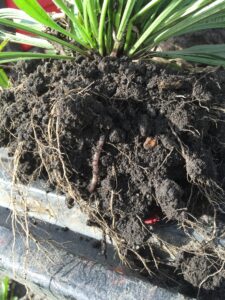What Makes Soil Healthy?

Soil health has been defined as “the continued capacity of soil to function as a vital living system, within ecosystem and land-use boundaries, to sustain biological productivity, maintain the quality of air and water environments, and promote plant, animal, and human health”. The challenge with this poetic definition is that, while it does describe the functional abilities of soil, it does not provide quantifiable values or measurements. There are no metrics to determine what makes soil healthy or to help identify the current soil health status (i.e. is it healthy or does it still need work?).
Although most producers can agree that soil health is important, actual measurable values of what makes soil “healthy” will vary from farm to farm. Numerous research projects across the globe are working on gaining a better understanding of soil health and what that means for individual operations but have yet to come up with specific, global parameters other than the definition provided in 1996. This challenge makes sense – consider Canada for instance. Values for pH, salinity, water infiltration, and organic matter vary significantly across the country and what is considered “good” in one area may not be considered valuable in another region.
Although the actual numbers and targets may be different on any given operation there are five principles of soil health that can help protect soils and maintain forage and feed productivity.
- Keep the soil covered: bare soil heats up and dries out faster and is more likely to erode. Living plants and biomass can provide cover.
- Reduce mechanical disturbance: disturbances such as overgrazing or tillage can result in undesirable changes to microbial and plant communities.
- Grow a living root all year: having a living root in the soil helps feed soil microbes and prevent erosion.
- Increase plant diversity: by growing a variety of different plants you provide feed for multiple different soil microbes. This also provides different rooting depths to help create soil aggregates, or groups of soil molecules that stick together to make the soil less fragile.
- Incorporate livestock grazing: livestock grazing delivers nutrients back into the soil, helps incorporate biomass, and stimulates plant production.
New research, including some funded through the BCRC, is helping to better define what makes soils “healthy”, how to better understand the role of soil health in the broader environment, and what producers should focus on when trying to improve the health of their soils. Although this research is still ongoing there are many management strategies that can be implemented on farm to protect and improve soil quality, it is worthwhile for producers to examine the soil on their operation and to develop their own soil health goals that are specific to their needs.
For information on methods that can help to manage and improve soil health, check out the following BCRC resources:
Grazing Management
- Forages for Soil Health (BCRC webinar)
- Grazing Management (BCRC topic page)
- Forage Species (BCRC topic page)
- Forage U-Pick – An Interactive Forage Species Selection Tool For Western Canada
- Forage Establishment (BCRC topic page)
- Cover Crops (BCRC topic page)
- Cover Crop Capabilities – Producer and Researcher Experiences (BCRC blog)
- Integrating Cover Crops (BCRC webinar)
Click here to subscribe to the BCRC Blog and receive email notifications when new content is posted.
The sharing or reprinting of BCRC Blog articles is welcome and encouraged. Please provide acknowledgement to the Beef Cattle Research Council, list the website address, www.BeefResearch.ca, and let us know you chose to share the article by emailing us at [email protected].
We welcome your questions, comments and suggestions. Contact us directly or generate public discussion by posting your thoughts below.